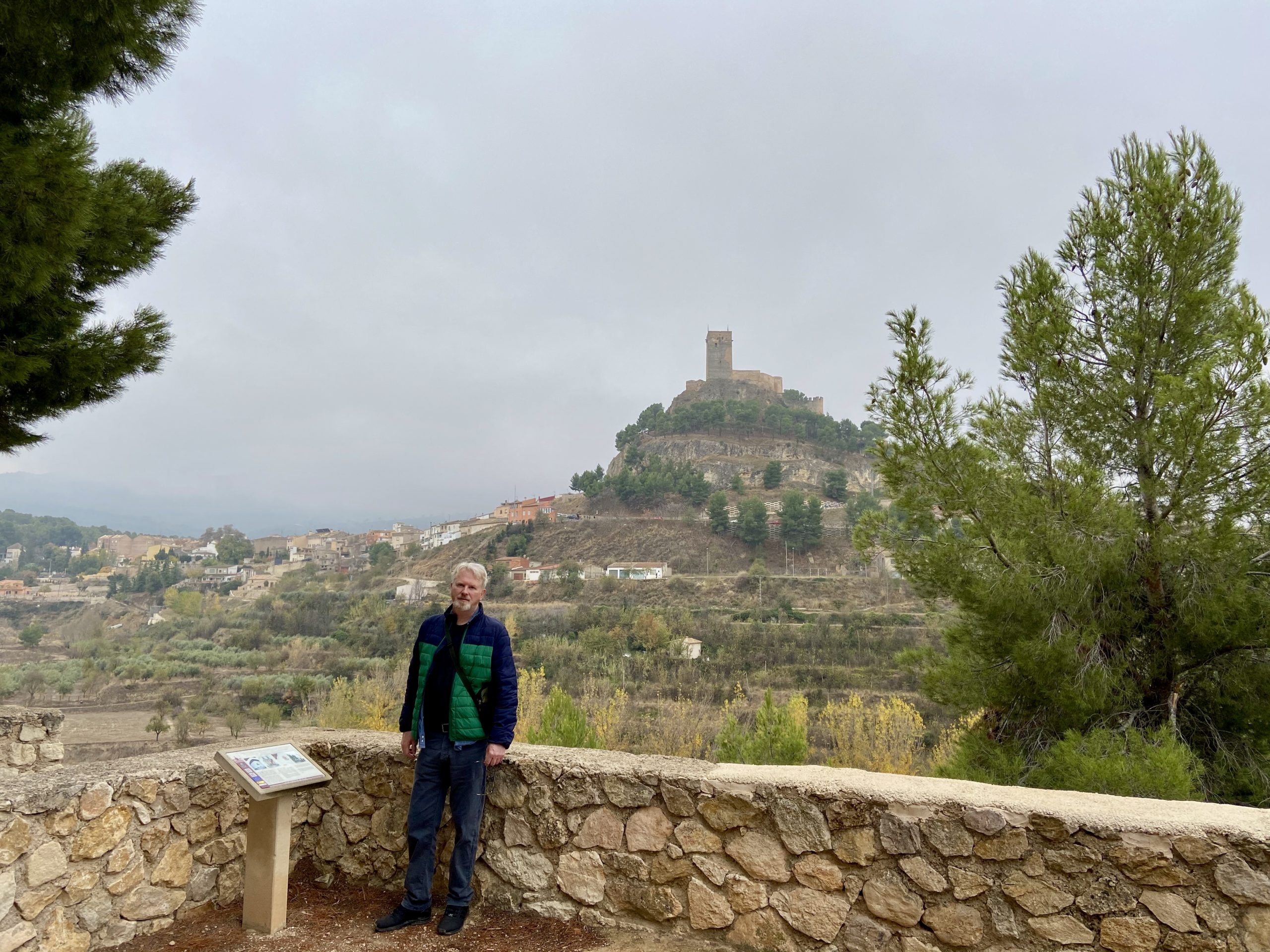Perhaps we have got used to the peace and quiet of our coastline during the winter season so summer is fast approaching and the coastline gets busier we are being more and more attracted to the incredible mountainous landscape of inland Alicante. The valleys that criss-cross Alicante province are punctuated by stunning castles standing atop craggy rocks. These strongpoints, often forts dating back to the time of Muslim or even Roman rule, gradually became the focus of settlement leading to the creation of villages and towns spread out below the fortress ramparts. The valley of the river Vinalopo has a particularly striking collection of such castles and has been designated a cultural and historical route; “Ruta de Los Castillos”. The route includes the towns of Villena, Banyeres de Mariola, Castalla, Sax, Elda, Petrer and Novelda all featuring castles dating back to Muslim times. Juan is from Villena so we very often drive up to visit his family and rarely miss the opportunity to enjoy the lovely village of Biar.

The town, nesting in the foothills of the Serra del Reconco 39 kms from Alicante, clusters hard up to its picture perfect little mediaeval castle. This beautiful little valenciano speaking town has a great combination of winding ancient streets and a truly stunning natural location. The town has an ancient history with opinion divided about whether its name derives from the Roman Latin word for “place of bees” or the Arabic word for “wells”.

We started our visit in the Plaza de la Constitutión which contains the magnificent parish church, town hall and tourist office. The square also contains a restaurant which serves snacks and full meals. From the square it is possible to head down to the handsome Carrer de la Torreta which is a broad street lined with the historic town houses of the wealthier inhabitants of the town. Alternatively, it is possible to go from the Plaza de la Constitución up the hill towards the castle passing on foot through winding mediaeval streets. The effort of finding one’s way up to the castle is rewarded by spectacular views down over the river valley below. The castle can be visited and it is a fascinating and beautifully preserved site believed to date back to an original Moorish fort built to subdue and control the surrounding countryside.

Heading back down into the town one should head to the Via del Platano where there are cafes selling wonderful ice creams which can be eaten sitting under the shade of the stately trees that line the neighbourhood’s streets. The square has an incredible tree “El Platano’. This tree is a specimen of about 26 metres in height, more than six metres in diameter. Its age is estimated at more than 250 years and its great growth is due to its location, for centuries in an agricultural environment. It is a specimen of incalculable value from a botanical point of view as it is the oldest and thickest, of its kind, in the Valencian Community and one of the largest in Spain. From there one can either follow a route down to the river valley skirting around the town exploring vegetable gardens and water meadows or alternatively one may take the Carrer de Camino de la Virgen which leads up out of town into the beautiful wooded hills towards the town’s hermitage.
Taking the road to the hermitage one passes the ceramic works of Ceramica Artistica Maestre where it is possible to purchase pottery and ceramics in the works’ showroom. There are also historic sites such as a snow well formerly used to store ice and snow brought down from the hills in winter. The road finally leads to the hermitage of Santuari de la Mare de Deu de Gracia, a magnificent church housing the town’s Madonna. Next to the hermitage there are picnic tables and a car park for those not wishing to walk up from the town.

From the hermitage there is a network of walking trails and paths leading up further into the beautiful hills behind the town, up the Reconco mountains or towards the Puerto de Biar. These paths offer a refreshing combination of fresh air and views down the Vinalopo valley and you can even see the Med from high up; one can only envy the lucky few who live in the villas sparsely dotted amongst the pine trees.
For those who chose to take the riverside path around the town it is possible to follow the river as it winds down from the hills to join the main channel of the Rio Vinalopo. The historical importance of the waterway is apparent from the signs of ancient development including an extraordinary preserved mediaeval aqueduct that formerly brought fresh water into the town. One is very much walking through an ancient human landscape where people have lived and worked for many hundreds of years despite its current peaceful appearance!
Despite its relatively small size, Biar offers a fascinating and thoroughly enjoyable day out and will appeal to both those who love history as well as those who simply want to get lost in nature.
Follow us on Instagram: juanruano.oficial & archiemaddan



